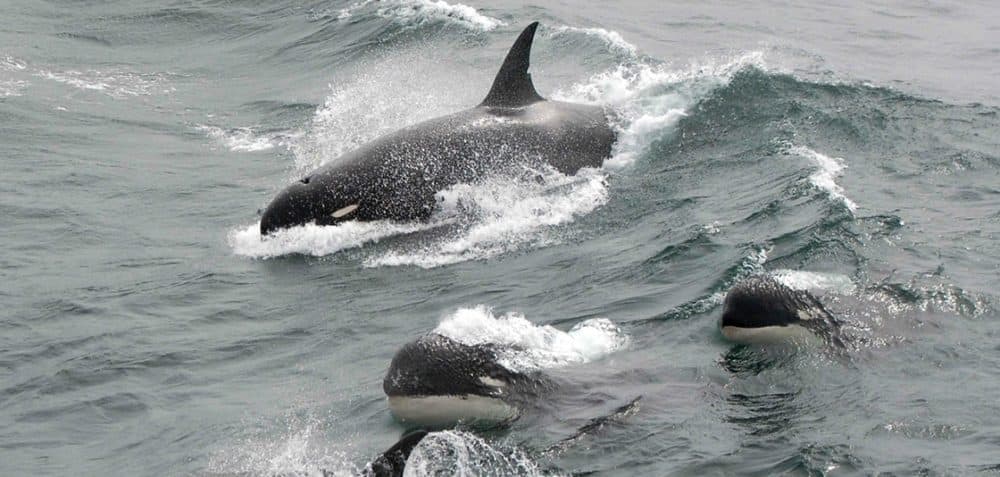Advertisement
Rare Orca Sighting Could Confirm New Species
Resume
Researchers recently got the first glimpse of what may be a new species of orca swimming off the southern tip of South America. The marine mammals, known as Type D killer whales, had been seen in old photographs take after a mass stranding in New Zealand in 1955, but until recently they had never been seen in their natural state.
Here & Now's Peter O'Dowd speaks with Robert Pitman, one of the scientists who made the discovery. He's a marine ecologist with the National Oceanic and Atmospheric Administration.
Interview Highlights
On the day he discovered the new orca species
“We're off the tip of Cape Horn, which has some of the nastiest weather in the world. We had a good idea about where we might find these whales, based on fishermen reports and photos, but we just needed a weather break, and we had a chartered vessel. We figured we'd need three weeks to get one or two good days of weather, and we had one good day and didn't find anything, and then we had to sit at anchor for eight days while the wind blew 40, 50 knots. Then it cleared up one morning, and we went out, and there they were.
“For me personally, these photos from 1955 in New Zealand had been around for over 50 years. We knew that they were still alive from some photos that surfaced in 2005, and I started looking for them at that time. And yeah, it was quite shocking to actually see them in the flesh after all these years.”
On how the Type D killer whale is different from other orcas
“Well, based on the photos, we knew that they were probably smaller than regular killer whales. They had a much more rounded head, instead of being tapered at the front end. And most interestingly, they have a very tiny, little eye patch. It's a very different-looking killer whale. In fact, most anybody [who] has ever seen a killer whale immediately recognizes that this is a completely different animal.”
On how scientists prove the Type D killer whale is actually their own unique species
“We have a crossbow, and we fire these darts that bounce off the whales, take a little slip of skin about the size of a pencil eraser, and the dart floats at the surface, and we pick it up, and we got three of those. And we'll be able to do some genetic analyses and see how Type D killer whales compare with other killer whales.”
On the debate over whether Type D killer whales represent a new species
“Not only are they very different-looking, but most importantly, the fishermen report that quite often, they see both types of killer whales, regular killer whales and Type Ds come into their fishing gear to take fish off. And when they do the larger regular killer whales drive off the smaller Type Ds and keep them at bay. So, this is important information that shows why Type D can manage to look different than regular killer whales, because they they don't socialize with them and they almost certainly don't interbreed with them.”
On naming the new orca
“Well, we suggested ‘subantarctic killer whale,’ because that tells us about the habitat that they that they live in. A lot of killer whales in the southern hemisphere migrate to Antarctica. This type apparently can't handle the cold waters, so we suggested ‘subantarctic killer whale,’ but you know, you can float out there and see if it catches on. Somebody may come up with something more poetic.”
On being on the verge of discovering a massive new sea creature
“You know, once we started plotting out where the sightings were, they were down in 40, 50 degrees south. That's the roaring 40s and the furious 50s. It's an offshore animal. It lives in the most inhospitable weather on the planet. It's not surprising at all that this animal went so many years without ever being identified by science. It's a good place to hide a large animal. … If we can find an animal this large that looks so completely different, what else is out there?”
Chris Bentley produced and edited this interview for broadcast with Todd Mundt. Serena McMahon adapted it for the web.
This segment aired on March 12, 2019.

